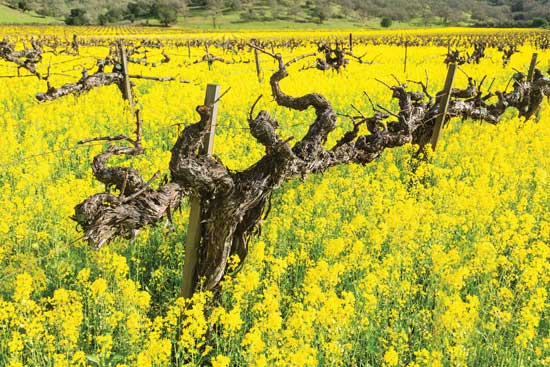If you've been to Napa anytime between March and May, you probably saw a breathtaking explosion of mustard plants between the rows of budding vines. The question is, why is it there?
It's a beautiful display, for sure. And sometimes, it's accompanied by thick clusters of California Poppies, blazing with the orange beauty of a Napa Valley sunset. But it's more than an eye-popping gift from Mother Nature: this ground covering plays an important role in vineyard development.
For wine enthusiasts, understanding the intricate details of vineyard management is like deciphering the notes of a fine wine – complex, yet immensely rewarding. So let's embark on a journey through the vine rows of Napa Valley to explore the significance of ground covering and its impact on the flourishing vineyards.
The Types of Ground Covering in Napa Vineyards:
As you stroll through the meticulously arranged rows of grapevines, you may find yourself waist-deep in the ground coverings blanketing the soil beneath. The most common types of ground coverings include:
- Arizona Flattop Buckwheat
- Nemophila menziesii
- Baby Blue Eyes
- Fragaria chiloensis
- Barley
- Natural Ryegrass
- Legumes
- Wildflowers, like the aforementioned mustard and poppies
These cover crops serve as natural mulch, providing essential nutrients to the soil while preventing erosion and promoting water retention.
In some vineyards, you might encounter the rustic charm of organic mulches such as straw, wood chips, or compost. These materials not only suppress weed growth but also enhance soil structure, fostering a healthy environment for root growth and microbial activity.
Additionally, some vineyard managers opt for synthetic ground covers like plastic or fabric mulches. While these materials offer effective weed control and moisture conservation, they lack the organic benefits of natural alternatives and may require proper disposal to prevent environmental harm.
The Chemistry Beneath Ground Cover in Napa Vineyards
Delving deeper into the soil, we uncover the intricate chemistry that underpins vineyard vitality. Ground coverings influence soil composition and nutrient availability, thereby shaping the terroir – the unique character and flavor profile of the wine.
Cover crops enrich the soil with nitrogen through a process called nitrogen fixation, where certain plants like legumes form symbiotic relationships with nitrogen-fixing bacteria. This nitrogen-rich soil provides a fertile foundation for grapevine growth, contributing to the development of robust vines and high-quality grapes.
Organic mulches gradually decompose over time, releasing essential nutrients such as nitrogen, phosphorus, and potassium into the soil. These nutrients are vital for various physiological processes within the grapevine, including photosynthesis, fruit development, and disease resistance.
Synthetic mulches, while effective in weed suppression, may not contribute organic matter to the soil. Moreover, their impermeable nature can hinder gas exchange and water infiltration, potentially leading to soil compaction and nutrient imbalances.
The Environmental Impact of Vineyard Ground Coverings
Beyond their impact on grape quality, ground coverings play a pivotal role in environmental sustainability within vineyard ecosystems. Cover crops promote biodiversity by providing habitats for beneficial insects, birds, and soil microorganisms. They also help mitigate soil erosion and runoff, preserving water quality in nearby streams and rivers.
Organic mulches contribute to carbon sequestration, trapping atmospheric carbon dioxide in the soil and mitigating climate change. By adopting organic farming practices, vineyard owners can reduce their carbon footprint and contribute to the conservation of natural resources.
In contrast, synthetic mulches pose environmental concerns, particularly regarding their disposal and long-term effects on soil health. Improper disposal of plastic mulches can lead to pollution and harm to wildlife, underscoring the importance of sustainable vineyard management practices.

The way ground coverings in Napa Valley vineyards influence vine growth and wine character, remind us of the profound influence that seemingly mundane elements can exert on the world of wine. From the verdant embrace of cover crops to the earthy embrace of organic mulches, each ground covering tells a story of stewardship and sustainability.
For wine enthusiasts, understanding the intricate interplay between soil, vine, and climate adds another layer of appreciation to the glass in hand. Behind every bottle of Magna Carta Cellars wine lies a tapestry of terroir woven by the hands of nature and nurtured by the expertise of viticulturists.
So, the next time you raise your glass to toast the complexities of Napa Valley wine, take a moment to reflect on the humble ground covering beneath your feet, for it is the foundation upon which great wines are built. Cheers to the beauty of vineyards, where the soil whispers secrets that only the discerning palate can decipher.

